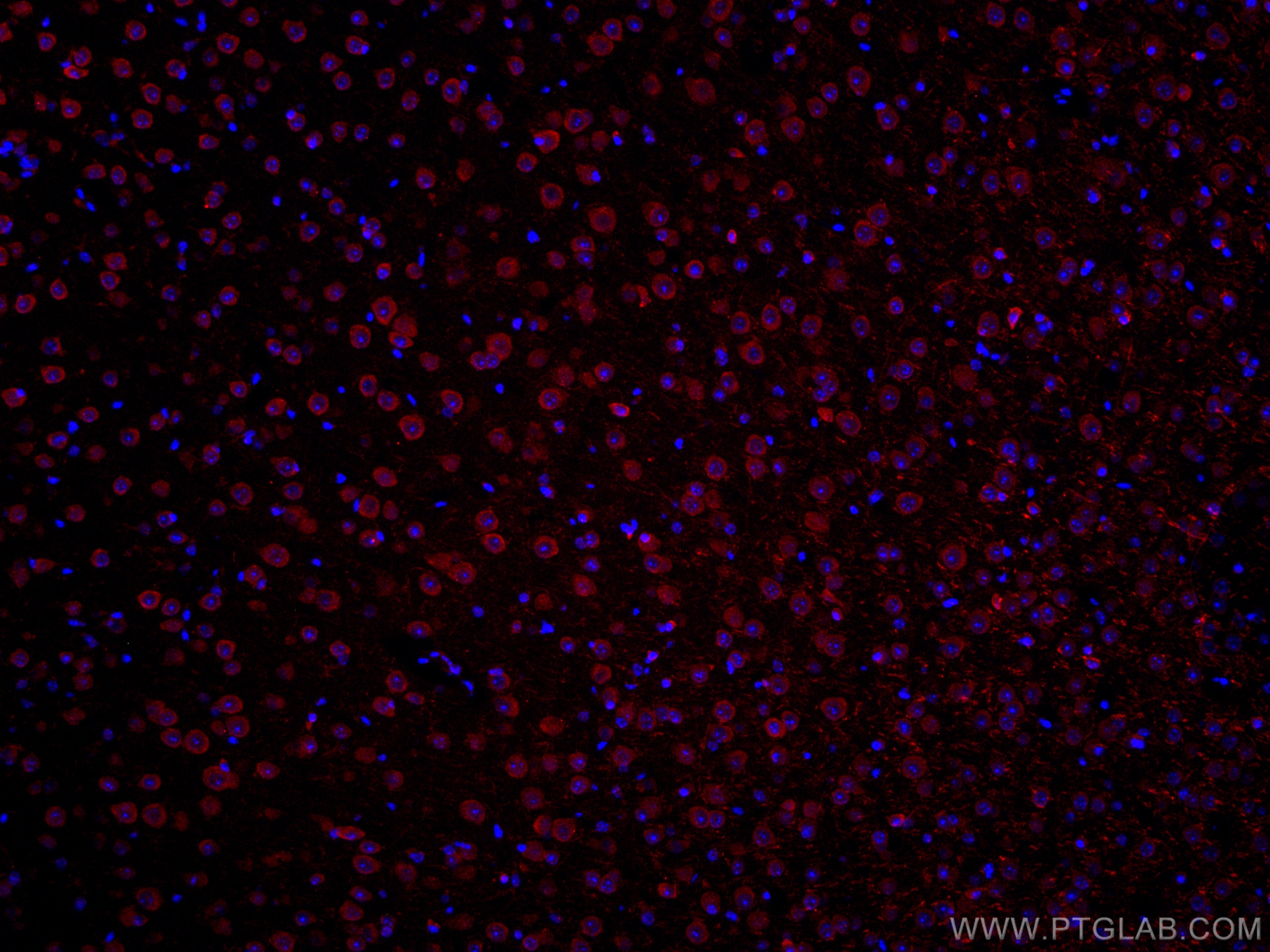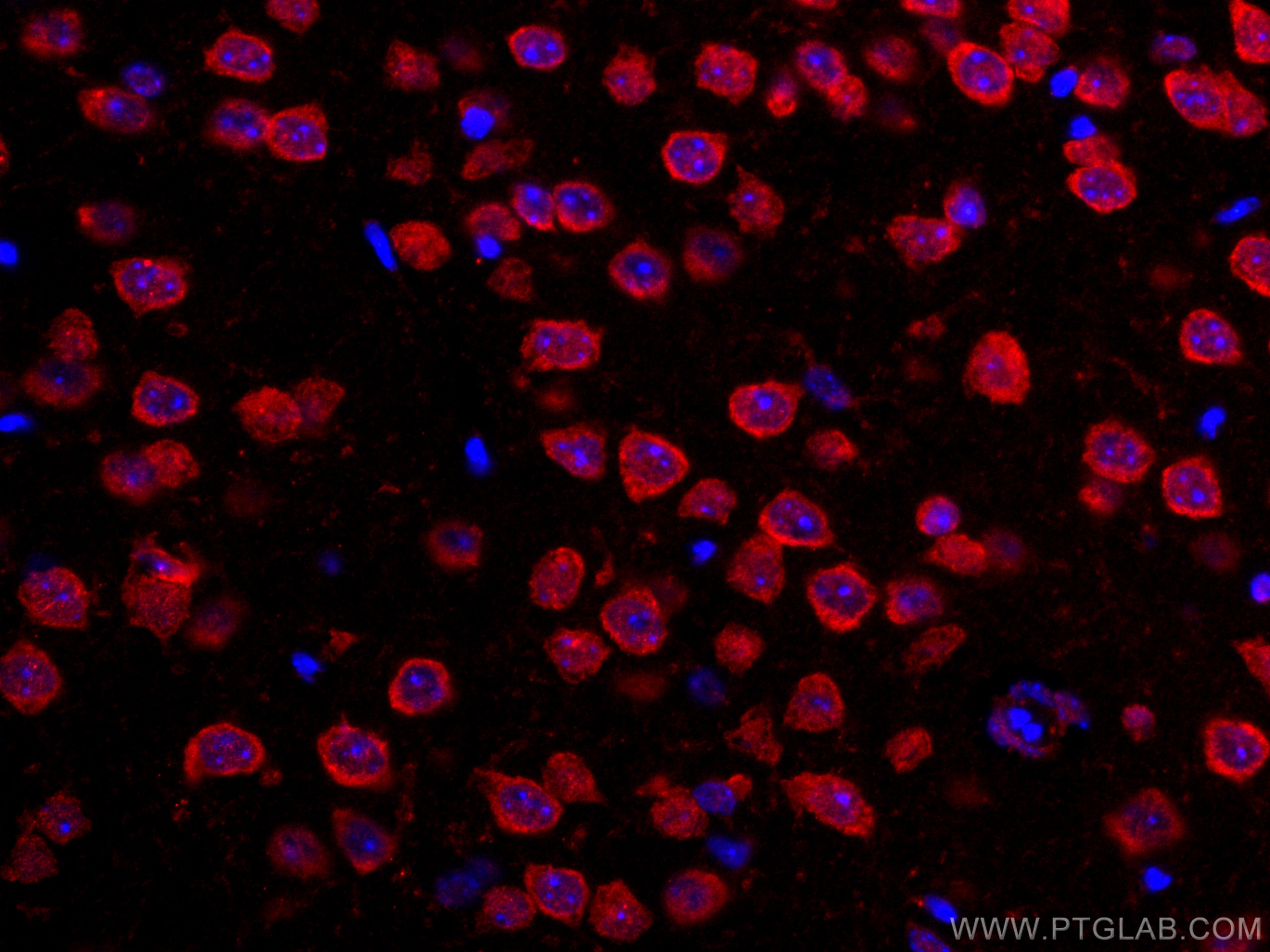Tested Applications
| Positive IF-P detected in | mouse brain tissue |
Recommended dilution
| Application | Dilution |
|---|---|
| Immunofluorescence (IF)-P | IF-P : 1:50-1:500 |
| It is recommended that this reagent should be titrated in each testing system to obtain optimal results. | |
| Sample-dependent, Check data in validation data gallery. | |
Product Information
CL594-67342 targets TRIM2 in IF-P applications and shows reactivity with Human, Mouse, Rat, Pig samples.
| Tested Reactivity | Human, Mouse, Rat, Pig |
| Host / Isotype | Mouse / IgG1 |
| Class | Monoclonal |
| Type | Antibody |
| Immunogen |
CatNo: Ag14637 Product name: Recombinant human TRIM2 protein Source: e coli.-derived, PET28a Tag: 6*His Domain: 1-300 aa of BC011052 Sequence: MASEGTNIPSPVVRQIDKQFLICSICLERYKNPKVLPCLHTFCERCLQNYIPAHSLTLSCPVCRQTSILPEKGVAALQNNFFITNLMDVLQRTPGSNAEESSILETVTAVAAGKPLSCPNHDGNVMEFYCQSCETAMCRECTEGEHAEHPTVPLKDVVEQHKASLQVQLDAVNKRLPEIDSALQFISEIIHQLTNQKASIVDDIHSTFDELQKTLNVRKSVLLMELEVNYGLKHKVLQSQLDTLLQGQESIKSCSNFTAQALNHGTETEVLLVKKQMSEKLNELADQDFPLHPRENDQLD Predict reactive species |
| Full Name | tripartite motif-containing 2 |
| Calculated Molecular Weight | 744 aa, 82 kDa |
| Observed Molecular Weight | 70-85 kDa |
| GenBank Accession Number | BC011052 |
| Gene Symbol | TRIM2 |
| Gene ID (NCBI) | 23321 |
| RRID | AB_2920118 |
| Conjugate | CoraLite®594 Fluorescent Dye |
| Excitation/Emission Maxima Wavelengths | 588 nm / 604 nm |
| Form | Liquid |
| Purification Method | Protein G purification |
| UNIPROT ID | Q9C040 |
| Storage Buffer | PBS with 50% glycerol, 0.05% Proclin300, 0.5% BSA, pH 7.3. |
| Storage Conditions | Store at -20°C. Avoid exposure to light. Stable for one year after shipment. Aliquoting is unnecessary for -20oC storage. |
Background Information
Tripartite motif-containing 2(TRIM2) is an E3 ubiquitin ligase which directs proteasome-mediated degradation of target proteins by the ubiquitination of NEFL and phosphorylation of BCL2L11. This protein contains an N-terminal RING domain, followed by a B-box-2 domain, a coiled-coil region, and 6 C-terminal NHL repeats. TRIM2 involves in the apoptotic response to ischemia via directing degradation of BIM protein, thus has a role in neuroprotection.
Protocols
| Product Specific Protocols | |
|---|---|
| IF protocol for CL594 TRIM2 antibody CL594-67342 | Download protocol |
| Standard Protocols | |
|---|---|
| Click here to view our Standard Protocols |






